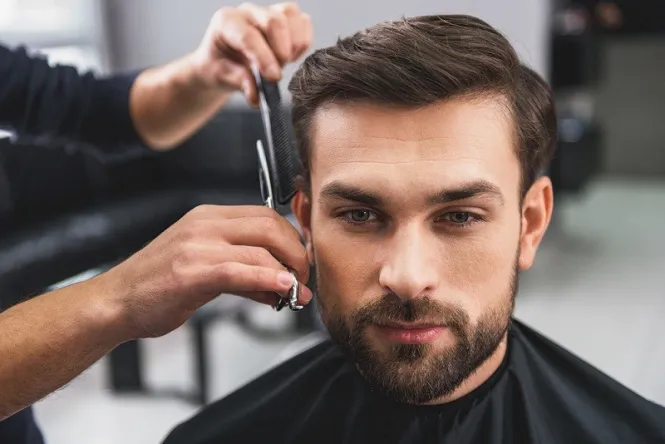How Often to Get a Haircut: A Comprehensive Guide
Getting a haircut is an essential part of personal grooming for many individuals. However, determining how often to schedule a haircut can be a bit confusing, as it often depends on various factors, including hair type, hairstyle, and personal preferences. This article will delve into the factors that influence how often you should get a haircut, the benefits of regular trims, and practical tips for maintaining healthy hair.
Understanding Hair Growth
The Hair Growth Cycle
Hair grows in cycles, which consists of three main phases:
- Anagen Phase: This is the active growth phase where hair follicles produce new hair. This phase can last for several years, depending on genetics and other factors.
- Catagen Phase: This transitional phase lasts for a few weeks. Hair growth slows down, and the hair follicle shrinks.
- Telogen Phase: In this resting phase, hair does not grow but remains attached to the follicle. After a few months, the hair falls out, and a new hair begins to grow in its place.
Average Hair Growth Rate
On average, hair grows about half an inch (1.25 cm) per month, which translates to approximately 6 inches (15 cm) per year. However, this rate can vary based on several factors, including genetics, age, and overall health.
Factors Influencing Haircut Frequency
1. Hair Type
Different hair types require different maintenance levels:
- Fine Hair: Fine hair tends to show damage and split ends more quickly, so it may require trims every 4 to 6 weeks to maintain a healthy appearance.
- Thick Hair: Thick hair can typically go longer between haircuts, often needing trims every 6 to 8 weeks.
- Curly Hair: Curly hair can also go longer between trims, usually every 8 to 12 weeks, as curls can hide split ends better than straight hair.
- Straight Hair: Straight hair often requires more frequent trims, typically every 6 to 8 weeks, to maintain its shape and prevent split ends.
2. Hairstyle
The specific hairstyle you choose can significantly impact how often you need to get a haircut:
- Short Hairstyles: Short haircuts, such as pixie cuts or buzz cuts, often require more frequent trims (every 3 to 6 weeks) to maintain their shape.
- Medium-Length Hairstyles: Medium-length styles can typically go longer between haircuts, usually every 6 to 8 weeks.
- Long Hairstyles: Long hair can often go 8 to 12 weeks between trims, especially if the hair is healthy and not experiencing significant damage.
3. Hair Health
The overall health of your hair can also dictate how often you should get a haircut:
- Split Ends: If you notice split ends or damage, it’s a good idea to schedule a trim to prevent further breakage.
- Dryness and Brittleness: Hair that feels dry or brittle may benefit from more frequent trims to maintain its health.
4. Personal Preference
Ultimately, how often you get a haircut can come down to personal preference. Some people enjoy the feeling of freshly cut hair and prefer to visit the salon more frequently, while others may be comfortable waiting longer between appointments.
Benefits of Regular Haircuts
1. Maintaining Hair Health
Regular haircuts help remove split ends and damaged hair, promoting overall hair health. By trimming your hair regularly, you can prevent breakage and encourage healthier growth.
2. Improved Appearance
A fresh haircut can enhance your appearance and boost your confidence. Regular trims help maintain your hairstyle, ensuring it looks its best.
3. Easier Styling
Well-maintained hair is easier to style. Regular haircuts can help remove bulk and shape your hair, making it more manageable and easier to work with.
4. Encouraging Growth
While it may seem counterintuitive, getting regular trims can actually promote hair growth. By removing damaged ends, you can prevent further breakage and encourage your hair to grow longer and healthier.
How to Determine When to Get a Haircut
Signs You Need a Haircut
- Visible Split Ends: If you notice split ends or frayed hair, it’s time for a trim.
- Dull Appearance: If your hair looks lifeless or lacks shine, a haircut can help revive its appearance.
- Unmanageable Hair: If your hair is difficult to style or feels heavy, it may be time to get a haircut.
- Change in Style: If you want to change your hairstyle or try a new look, scheduling a haircut is essential.
Recommended Haircut Frequency by Hair Type
| Hair Type | Recommended Frequency |
|---|---|
| Fine Hair | Every 4 to 6 weeks |
| Thick Hair | Every 6 to 8 weeks |
| Curly Hair | Every 8 to 12 weeks |
| Straight Hair | Every 6 to 8 weeks |
| Short Hair | Every 3 to 6 weeks |
| Medium-Length Hair | Every 6 to 8 weeks |
| Long Hair | Every 8 to 12 weeks |
FAQs About Haircuts
How often should I get a haircut?
The frequency of haircuts depends on your hair type, hairstyle, and personal preference. On average, most people should aim for a trim every 6 to 8 weeks.
Can I wait longer between haircuts?
Yes, if your hair is healthy and you’re not experiencing split ends or damage, you can wait longer between haircuts. However, it’s essential to monitor your hair’s condition.
What if I have curly hair?
Curly hair can often go longer between trims, typically every 8 to 12 weeks. Regular trims help maintain curl shape and prevent dryness.
How do I know if I need a trim?
Signs that you need a trim include visible split ends, dull appearance, unmanageable hair, and a desire to change your hairstyle.
Can regular haircuts promote hair growth?
While haircuts do not directly promote hair growth, regularly trimming split ends can prevent breakage and help your hair grow healthier and longer over time.
Where can I find more information about hair care?
For more detailed information about hair care and maintenance, you can visit the Wikipedia page on Hair Care.
Conclusion
Understanding how often to get a haircut is essential for maintaining healthy hair and achieving your desired style. By considering factors such as hair type, hairstyle, and personal preferences, you can determine the best frequency for your haircuts. Regular trims not only improve the appearance of your hair but also promote its overall health. Whether you prefer to visit the salon every few weeks or every few months, finding a routine that works for you will ensure that your hair looks its best.



